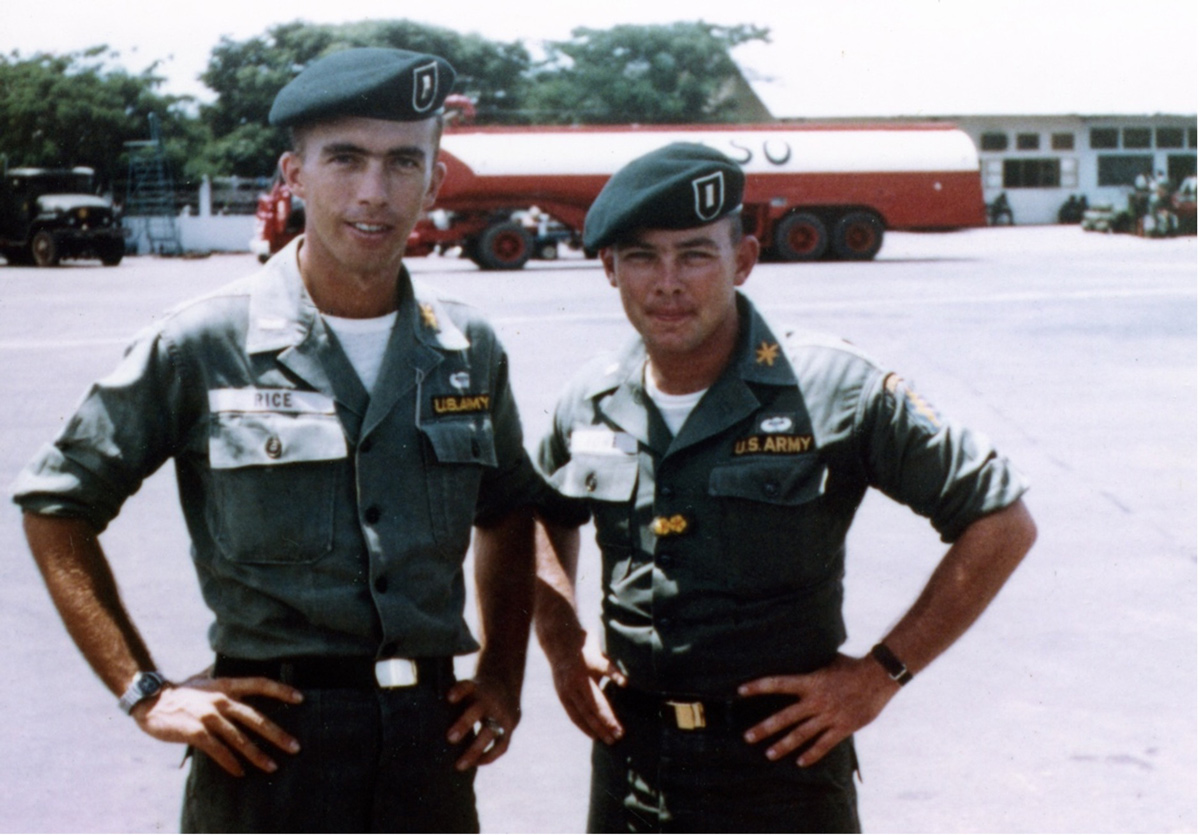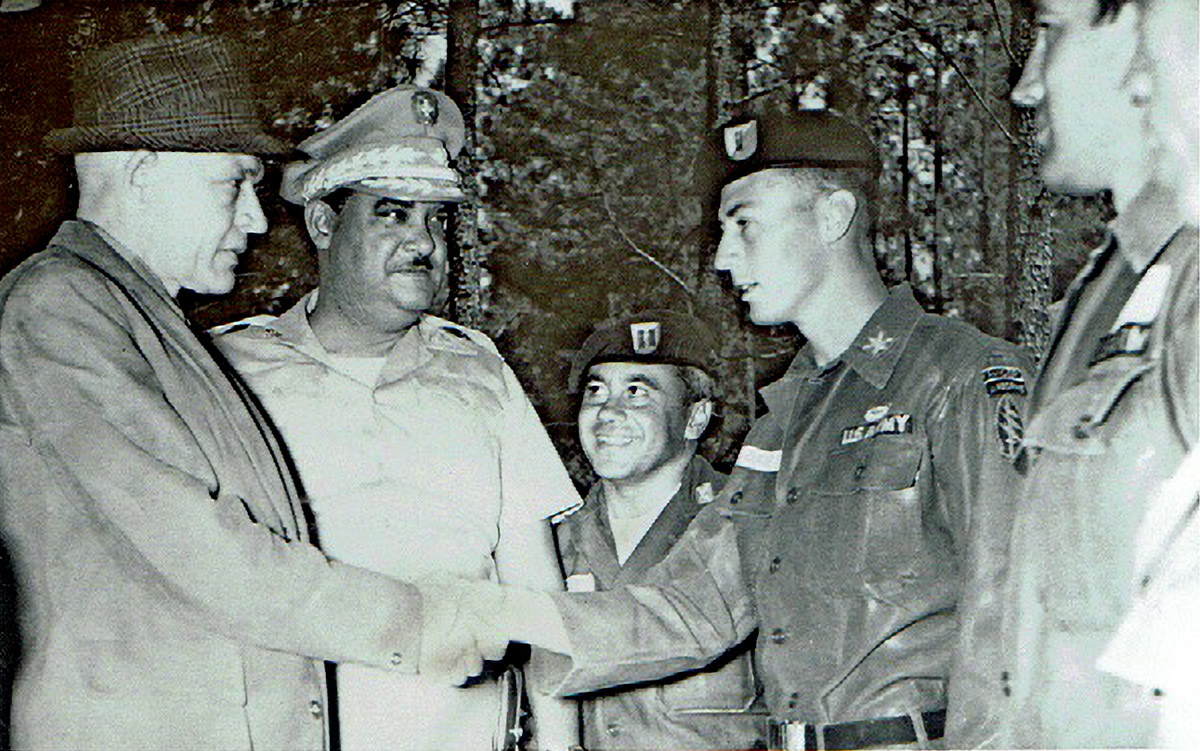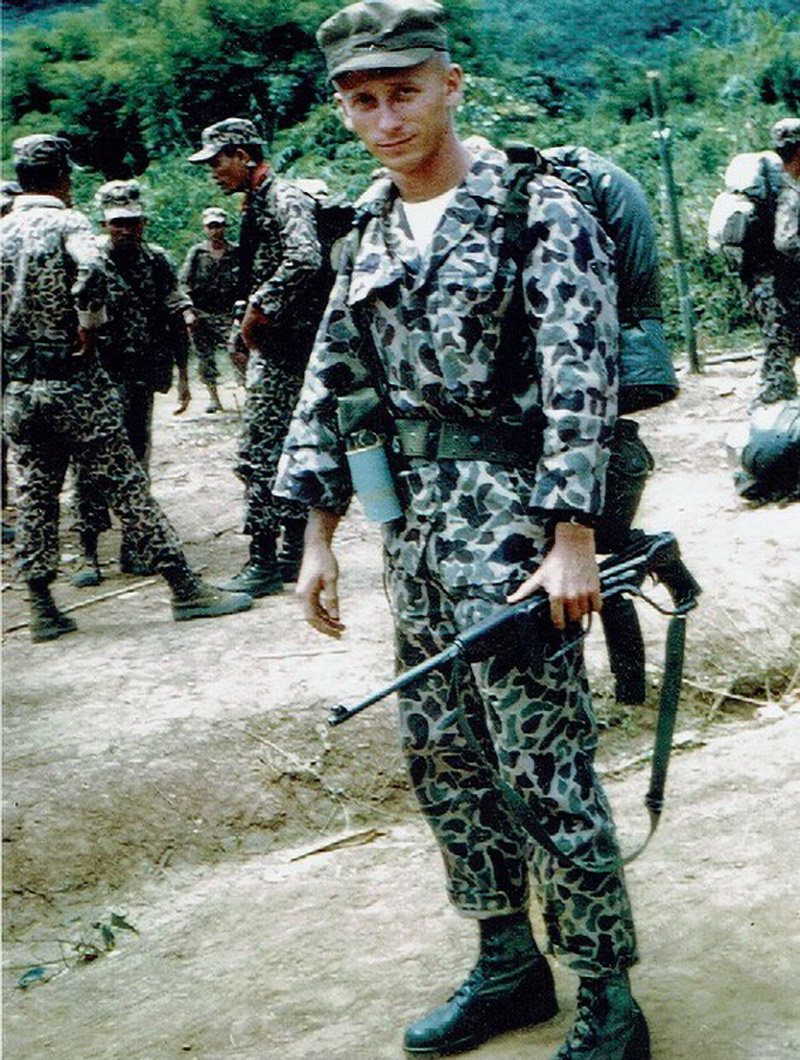The DASL’s (Rhymes with “hassles”)
By Fred Rice
Special Forces is now well into its eighth decade.
Here is a look back at some of the events that shaped its early years.
In early 1961, before Vietnam and even before the return of the Green Beret, a unique group of officers who became known as “DASL’s” made an impact on the early growth of Special Forces and the Special Warfare Center.
Special Warfare was still in its first decade and still in its initial growth phase. Trial and error was a common practice during this time as Special Forces continued to develop its own unique operational doctrine. One trial under consideration was the evaluation of lightweight “Pack 75” howitzers as possible indirect support weapons for unconventional warfare.
Experienced Artillery officers would be needed to study and develop unique methods of employing howitzers, and to train SF personnel in their use, so the Special Warfare Center, as it was then known, requested that 25 Artillery Captains be assigned to Special Forces as Infantry under the “branch immaterial” category.
Apparently, Artillery branch was not too keen about the prospect of losing that many experienced Captains to what was then still considered by many as an experimental and undesirable assignment, so they decided to send more “expendable” officers instead.
At about the same time, members of the West Point Class of 1960 who had branched Artillery and had graduated from both Ranger and Airborne Schools at Ft. Benning, GA were nearing completion of the Artillery Officers Basic Course at Ft. Sill, OK. The class was called together and notified that anyone who wished to volunteer for assignment to Special Forces would be excused from their original initial duty assignment.

1LT Fred Rice and 1LT Nick Rowe @ Tan Son Nhut Airport, Saigon, RVN, 18 July 1963. Rowe had just arrived from the US on the same plane that would take Rice home. Rowe is wearing the Vietnamese 1LT insignia just given to him by Rice “for good luck.” They were West Point classmates and close friends who went through Ranger, Airborne, Artillery and Language schools together. They were “buddies” through their Special Forces training and took up sports car racing and skydiving together. Rowe was also an usher at Rice’s wedding. Less than three months after this picture was taken, Rowe was captured by the Viet Cong in the Mekong Delta and was held prisoner for more than five years before escaping in December 1968. Rowe established the US Army’s SERE school at Camp Mackall, NC. Rowe was assassinated by Communist guerrillas in the Philippines in April 1989. He is buried at Arlington National Cemetery near the Tomb of the Unknown Soldier.
The response was quick. The first hand to go up was that of 2LT Fred Rice, followed quickly by 2LT Nick Rowe, who was seated beside him. They were followed by more Second Lieutenant classmates, all Ranger, Airborne and Artillery qualified, until there were seventeen hands in the air. Added to the group later was 2LT Gary Stiles, who had graduated from Artillery OCS at the same time, bringing the total to eighteen.
This may not have been exactly what Special Forces had in mind, but it was apparently all that the Artillery was willing to provide. Although the young officers did not know it at the time, this would make them the first Second Lieutenants ever assigned to Special Forces without having served there previously and earning their commission through OCS.
The group’s new orders were to report to HQ, 7th Special Forces Group, at Ft. Bragg on 5 May, 1961, which happened to be the same day that Alan Shepard became the first American to travel into space. One by one, all eighteen found their way to the Group Headquarters on Gruber Road and reported to the Adjutant for duty. Astonished at first, the Adjutant became accustomed to the gold bars as the day went on and instructed them to report back for a briefing at 1700 hours.
The young officers sat quietly in the second floor briefing room, not knowing what to expect, when the sound of heavy boots came up the stairs, accompanied by a string of expletives that continued until LTC “Rusty” Riggs, the 7th Group Executive Officer, stood in front of them and began a profanity-laced tirade, which went something like,” I don’t know who the f*** sent you here, but we sure as s*** don’t need you, and we’re going to do every f***ing thing we can to get rid of you as soon as possible! You have no experience, and you don’t know s***! You’re nothing but a bunch of G**D*** Dumb Ass Second Lieutenants, and we sure as hell don’t want you!” The group started to wonder whether volunteering for Special Forces was the right choice after all.
A few minutes later, the Group Commander, COL Clyde Russell, entered the room. He suggested that LTC Riggs may have been a bit overzealous and hasty in his desire to get rid of the young officers. He explained that since he was stuck with 2LTs instead of CPTs, he would try to make the best of the situation. It was clear, however, that the original idea of evaluating “Pack 75’s” was now dead.
Since the Lieutenants had no previous Special Forces experience, or experience of any kind for that matter, it was decided that they would learn their trade from the ground up by attending the same MOS training given to enlisted Special Forces soldiers. For the next few months, they sat alongside enlisted students and received concentrated training in weapons, demolitions, communications, operations and intelligence, with an overview of SF medical training.
In order to release a number of more experienced and qualified SF officers for other duties, the Lieutenants were also assigned to administrative duties for the newly formed Special Forces Training Group under the command of LTC “Buzz” Miley.
Their days started with reveille at 0400 hrs, PT at 0500, breakfast at 0600, classes from 0700 to mid-afternoon, followed by company admin duties. After dinner, usually at the Smoke Bomb Hill Officers’ Club Annex, they relaxed with a few drinks while listening to war stories from some of the more experienced SF officers.
Sandwiched into the middle of this busy schedule were jumps with experienced SF Master Parachutists out of a variety of old and exotic aircraft, such as C-46’s, C-47’s, C-119 “Flying Boxcars” and even Navy SA-16 amphibians. It was all very unique and valuable training.
As time went on, the young officers took a liking to the name given to them by LTC Riggs. One evening, several of the DASL’s were gathered at the Smoke Bomb Hill Annex, when an officer from another unit began giving them a hard time for being inexperienced and out of place in Special Forces. LTC Riggs, who was seated in his usual spot at the bar, told the officer to stop and get out. “They may be dumb asses, but they’re my dumb asses, and no one else better f*** with them unless I say so!”

Team A-12 meets newly elected President of The Dominican Republic Juan Bosch at Costanza, Dominican Republic in March, 1963. Lt. Dan Orr, A Team Executive Officer shaking hands.

Bill Bailey on patrol near Dak To, 1963
The DASL’s knew that they had arrived, and that LTC Riggs had taken them under his wing. “Dumb Ass Second Lieutenants” was shortened to its acronym, and they started proudly referring to themselves as “The DASL’s.” The unique nickname has stuck over the years, and they still refer to themselves as “DASL’s” to this day.
The DASL’s soon proved their worth and began getting key operational and school assignments that recognized their value to Special Forces.
In August, half of the DASL’s were sent to the Army Language School in Monterey, California for a year’s study in a variety of foreign languages. Keith Garner, Chuck Luton and Fred Rice studied Thai in anticipation of assignments to White Star Mobile Training Teams in Laos. Bill Bailey, John Denton and Pat Flannery were assigned to Arabic classes, with an eye to training missions in the Middle East. Dan Orr and Jim Pearl studied Spanish in preparation for the formation of new SF Groups in Latin America, and Nick Rowe was assigned to Chinese Mandarin for reasons unknown.
The other half of the group, including Jack Hixson, Jim Hopper, Don Prosser, Bert Spivy, Gary Stiles, Dick Sutton, Tom Tamplin, William Vencill and “JJ” York remained at Ft. Bragg and were present when President Kennedy visited and reauthorized the Green Beret. They went straight to White Star Teams on operational “missions” (now called “deployments”) in late ’61 and early ’62 after completing the Special Forces Officers Course, or “UW School,” which later became the “Q Course.”
The group returning from the Language School got a variety of assignments. White Star had been discontinued while they were in school, so half of them were assigned to the 5th Group when it was formed and were assigned to teams that deployed to Vietnam after they completed UW School. Others trained for missions in Latin America.
The DASL’s were involved in the initial development and implementation of much of the early doctrine for counterinsurgency operations in Vietnam. Their solid initial performance also opened the door soon after for other 2LT’s to be assigned to other groups as Special Forces went through its rapid growth phase in the early 1960’s.
Many of the DASL’s distinguished themselves in a variety of fields over the years. Their most recognized member was COL James N. “Nick” Rowe, who was captured by the Viet Cong in October, 1963 and held prisoner in the Delta until his escape more than five years later.
COL Rowe went on to develop the SERE course at Ft. Bragg, which has trained thousands of Green Berets and others. Sadly, he was assassinated by Communist guerrillas in the Philippines in 1989. Another DASL, Bill Bailey, went to Dak To, Vietnam as XO to then-CPT Charlie Beckwith, who later established the Delta Force.
Three DASL’s became doctors, Denton as a civilian and Flannery and Sutton with the Army. Hopper and Pearl became successful attorneys. Rice was elected to three terms as a New Hampshire State Representative.
Two DASL’s became authors. Sutton wrote, Operation White Star about SF operations in Laos. Rowe’s Five Years to Freedom detailed his POW imprisonment and escape. He later wrote, The Judas Squad, and co-authored, The Washington Connection with Robin Moore, who is best known as the author of The Green Berets.
Still others became highly successful business owners and executives, college professors, military historians and elected officials. All in all, they acquitted themselves well in both military and civilian careers.
Five DASL’s retired with the rank of COL, five as LTC’s and two as Majors. Others left before retirement with ranks from 1LT to MAJ. Collectively, the DASL’s earned numerous awards and decorations: 2 SS, 4 LM, 18 BSM, 3 DMSM, 23 MSM, 1 AM(V), 6 AM, 3 PH, 121 CM and 12 CIB’s. Of the seventeen original members of the group, eight are still living and most stay in frequent contact with one another.
Overlooked in the “official” histories of Special Forces, the DASL’s nevertheless paved the way for many other junior officers to join and contribute to the Army’s most distinctive and distinguished unit, the Green Berets.
ABOUT THE AUTHOR — Fred Rice is a member and past president of SFA Chapter 54 in Boston and currently lives in North Carolina. He is a frequent visitor to Ft. Bragg where he has been a regular speaker on leadership for SOF CCC classes.

DASLs–simply outstanding history! Suggest contact Doug Livermore and put this in the next DROP! And we would appreciate more similar articles. Thanks!